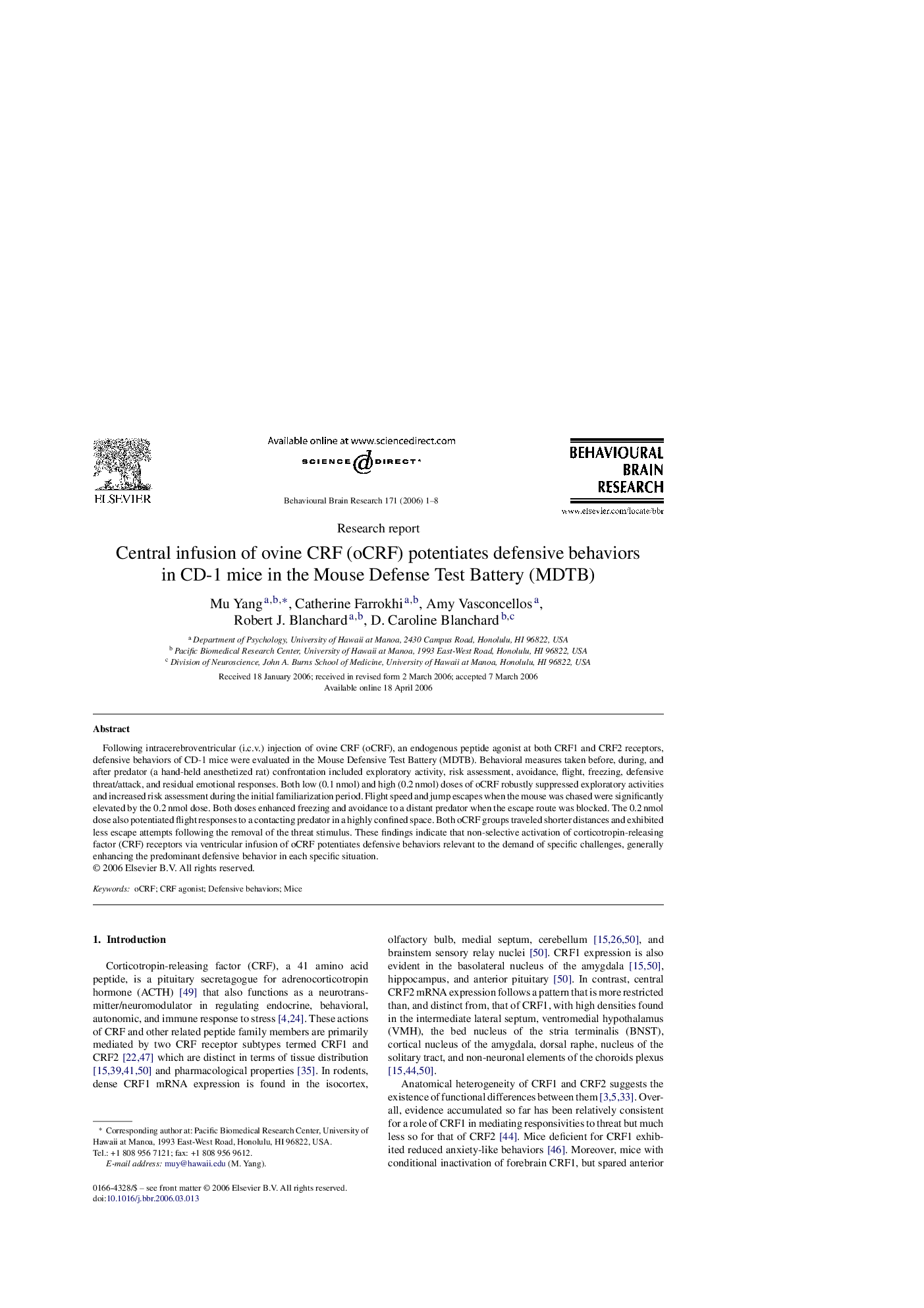| Article ID | Journal | Published Year | Pages | File Type |
|---|---|---|---|---|
| 4316262 | Behavioural Brain Research | 2006 | 8 Pages |
Following intracerebroventricular (i.c.v.) injection of ovine CRF (oCRF), an endogenous peptide agonist at both CRF1 and CRF2 receptors, defensive behaviors of CD-1 mice were evaluated in the Mouse Defensive Test Battery (MDTB). Behavioral measures taken before, during, and after predator (a hand-held anesthetized rat) confrontation included exploratory activity, risk assessment, avoidance, flight, freezing, defensive threat/attack, and residual emotional responses. Both low (0.1 nmol) and high (0.2 nmol) doses of oCRF robustly suppressed exploratory activities and increased risk assessment during the initial familiarization period. Flight speed and jump escapes when the mouse was chased were significantly elevated by the 0.2 nmol dose. Both doses enhanced freezing and avoidance to a distant predator when the escape route was blocked. The 0.2 nmol dose also potentiated flight responses to a contacting predator in a highly confined space. Both oCRF groups traveled shorter distances and exhibited less escape attempts following the removal of the threat stimulus. These findings indicate that non-selective activation of corticotropin-releasing factor (CRF) receptors via ventricular infusion of oCRF potentiates defensive behaviors relevant to the demand of specific challenges, generally enhancing the predominant defensive behavior in each specific situation.
